When my wife and I bought our first home earlier this year, we opted for a few pretty rigorous inspections. The house is ninety years old, and we plan to stay here for the rest of our lives. It was a major investment, and we wanted to make sure it was a wise one.
This fall, with the help of True Value Hardware, I decided to tackle one of the biggest projects that had been weighing on me since our first inspector mentioned it … the porch. Read on to see how I transformed it!
Ok, so an inspector’s job is to point. out. every. single. tiny. little. thing. that they can possibly imagine ever being an issue for the next hundred years. And that’s a good thing. That’s what you pay them to do. But when they send back a twelve page report, it’s a bit intimidating.
Thankfully, our general inspection came with a follow-up phone call from the inspector, who said, “I know it looks like a lot. But seriously, this is great house. Go for it. The only thing you need to address right away is that front porch.”
I was prepared. He had already pointed out the problem areas to me the second he came to the door. The porch floor is original to the house; and it simply hadn’t been painted or refreshed in way too long.
It’s a high traffic area that’s exposed to weather, and there was a lot of cracked, peeling, and chipped paint. That creates an easy path for water to soak in. So, before the notoriously damp Pacific Northwest winter hits, we took the opportunity to seal the wood, do some refinishing, and make everything feel a bit more welcoming.
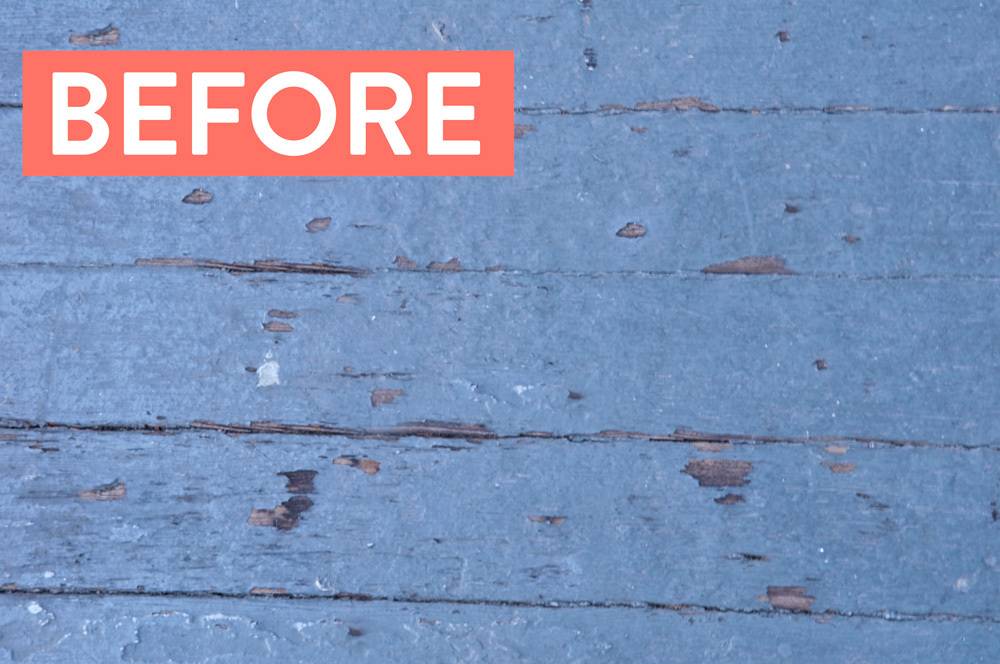
The Before!
So, here are how things looked a few weeks ago.
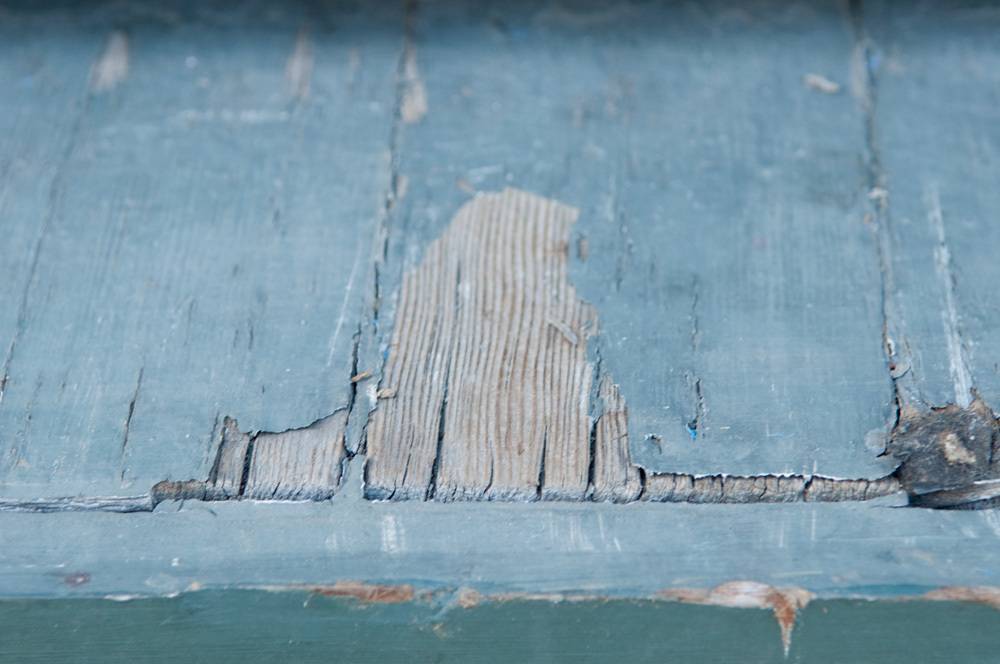
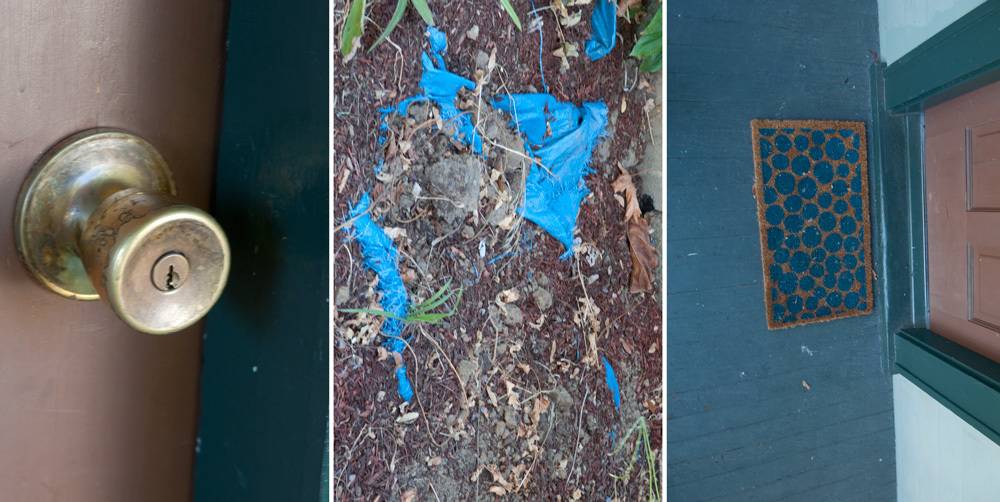
The only design details on the front of the house were the mailbox and the house numbers. Both were pretty banged up, and if you ask me, don’t really match the Northwest Bungalow style of the house.
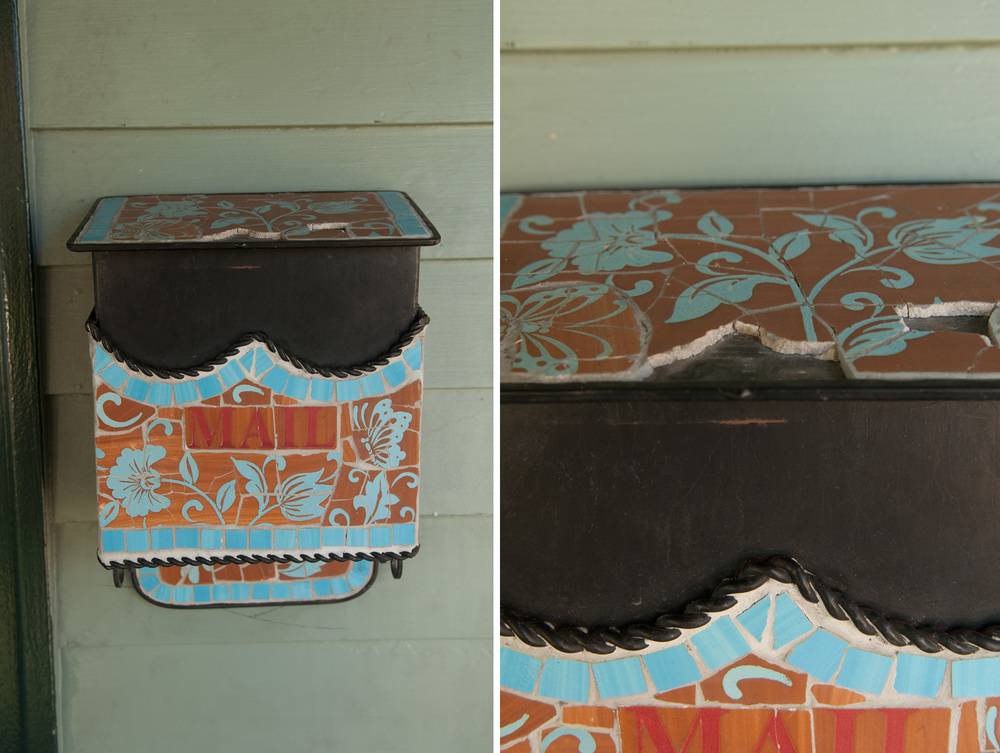
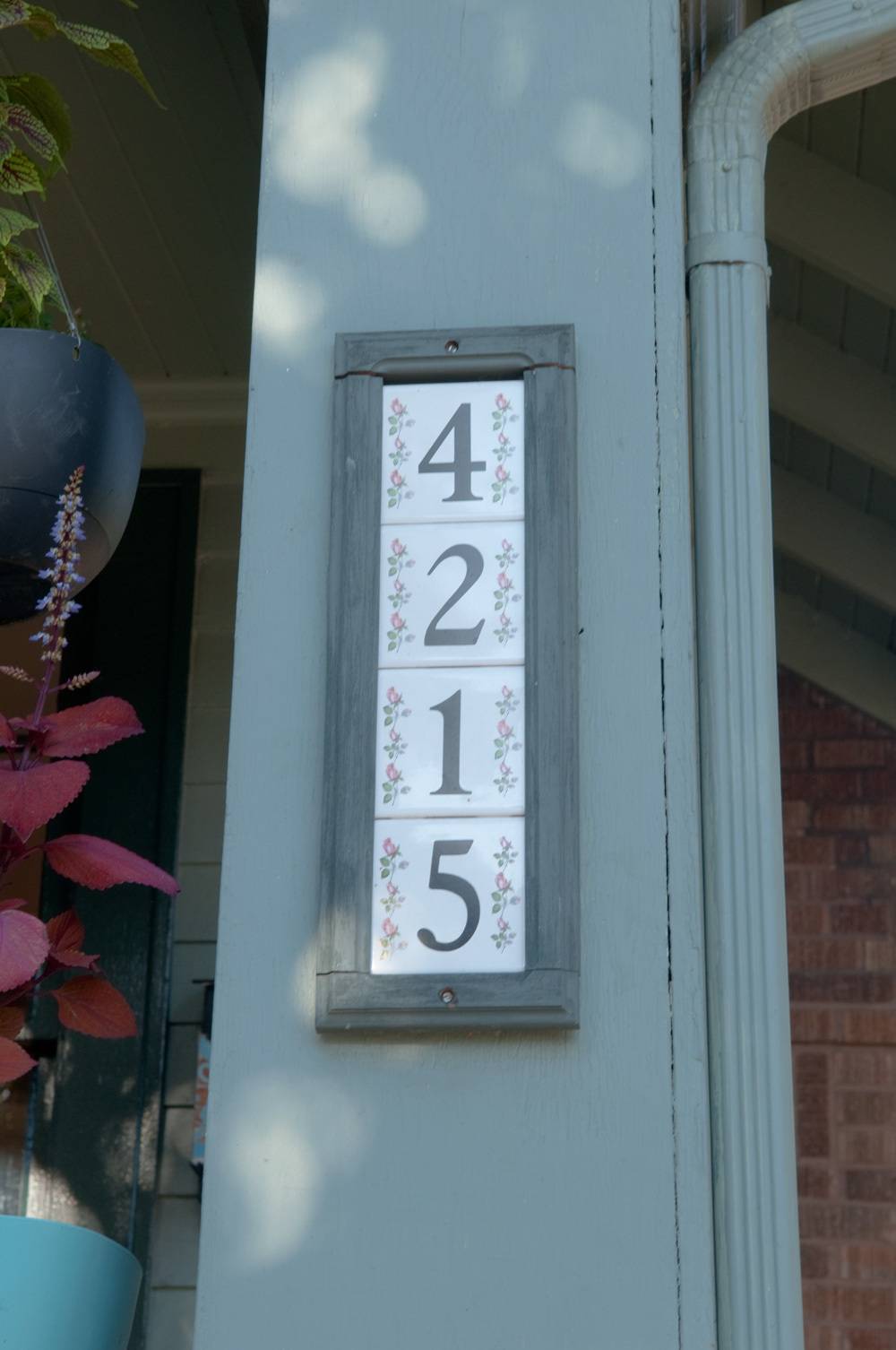
Oh, and the porch light has never worked. And even if it had, it’s super ugly. Let’s do a makeover!
How to Paint a Porch
Before we begin, a note on safety!
If your house was built before 1978, you need to consult a professional to test for lead-based paint. In all likelihood, if your house is older than thirty-five years, it contains some lead-based paint. Make sure you have it properly mitigated before moving forward.
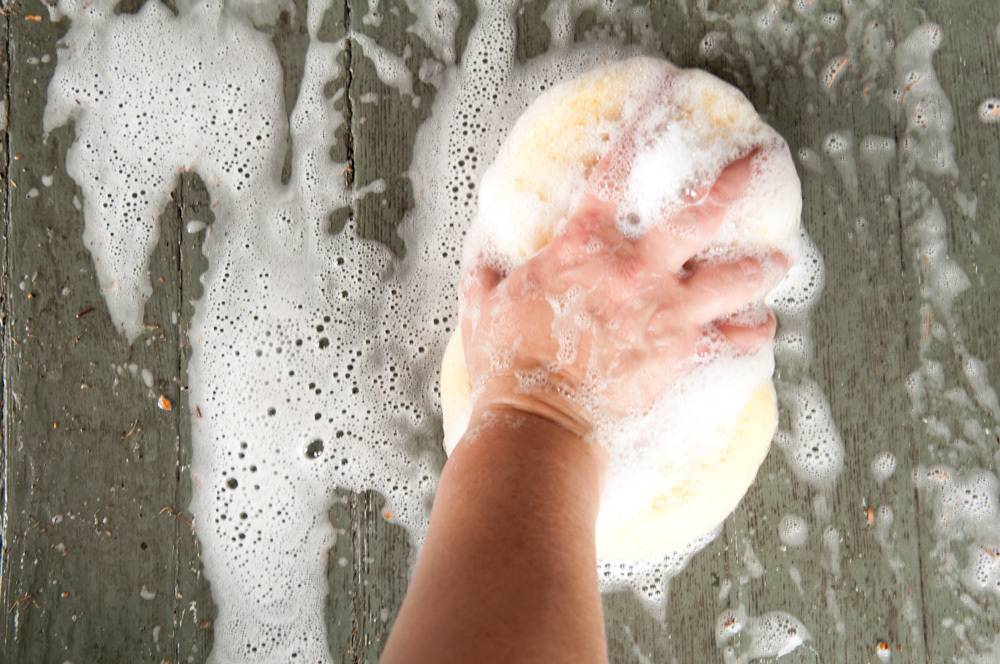
1. First up, clean the whole thing. It might not look like it, but your porch is filthy. Use a mild detergent and warm water to wipe down your doors, windows, railings, trim, etc., and rinse clean. Allow it to dry for a day before moving forward.
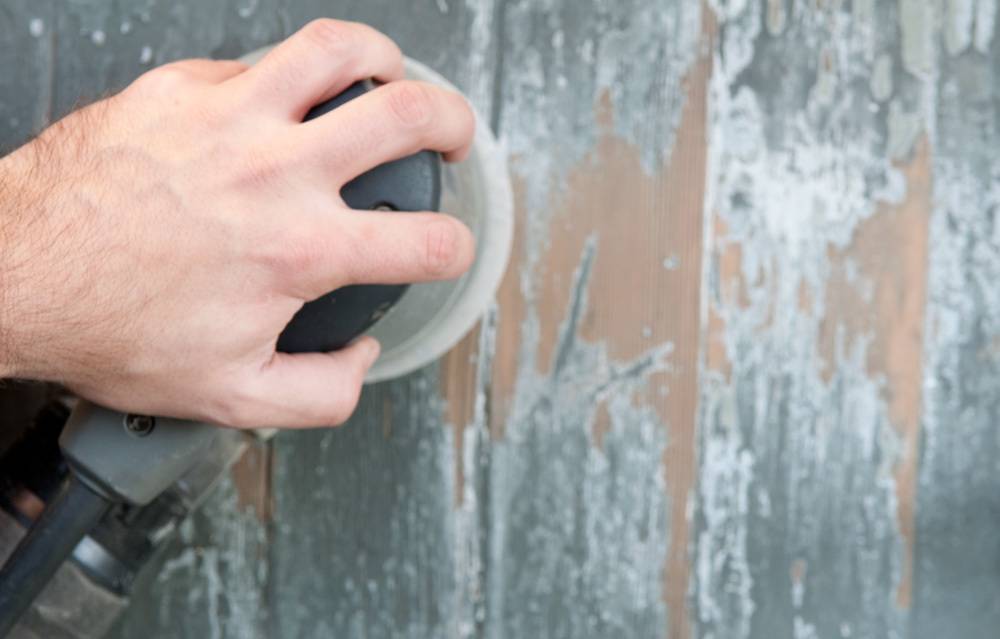
2. Next, address the surfaces to be painted. Remove any chipped, cracked, or peeling paint. You can safely do this two ways:
1) with an electric sander attached to a vacuum with a HEPA filter attached
2) by using wet sanding paper and water, which keeps the dust from flying into the air
In the interest of time and backbreakiness, we went the powered route.
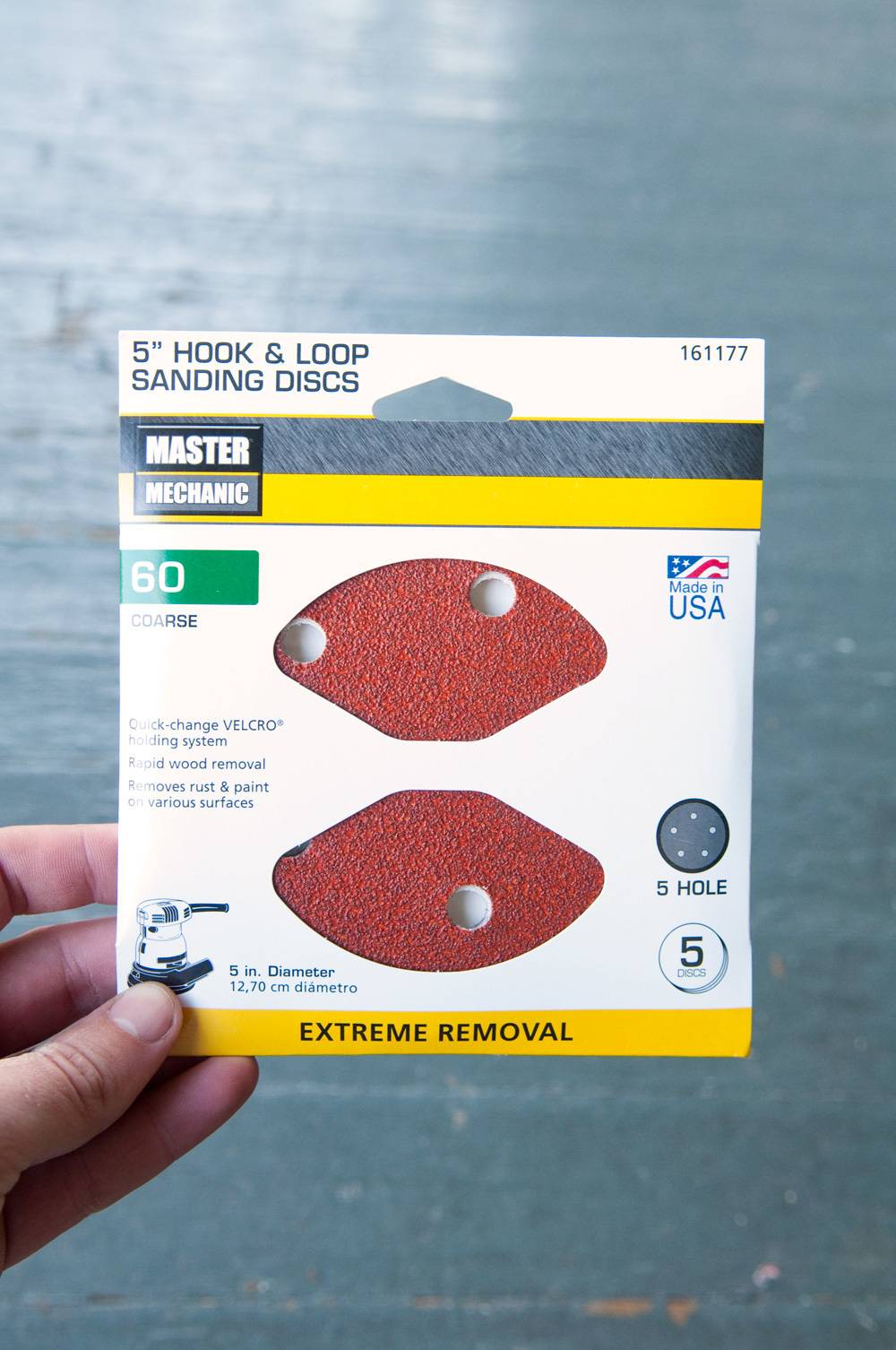
We used a random-orbit sander attached and some coarse, 60-grit sandpaper I picked up at True Value. (Attached to our shop vacuum equipped with a HEPA filter). We didn’t try to remove the old paint entirely (there are nearly 100 years of layers). We just wanted a nice, flat, and sticky surface to help the new paint adhere. Use a light touch and long even strokes, making sure to capture the dust at its source.
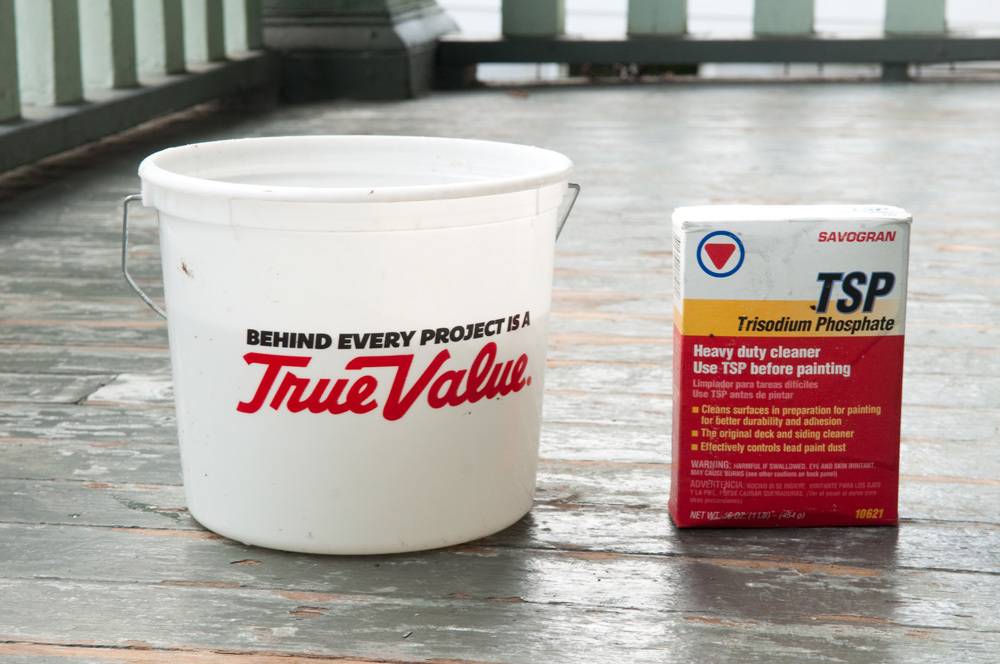
After sanding, wipe the porch with a TSP solution. This may seem like additional work since you just washed it, but just look at how dirty that water is. You don’t want that in your paint!
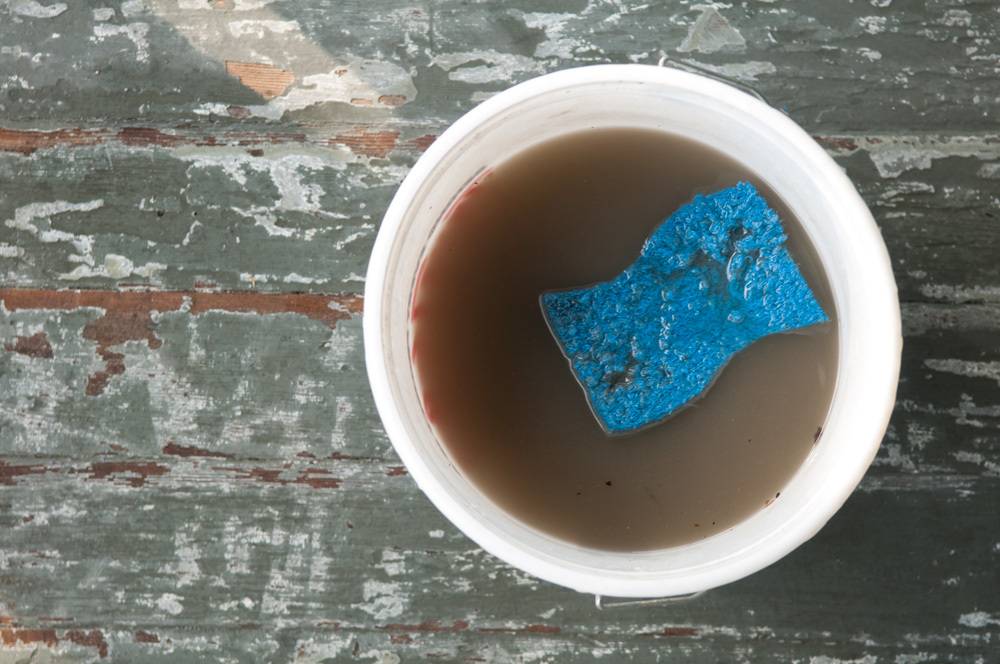
Plus, it has the added benefit of removing any fine dust left behind from sanding. Allow everything to dry thoroughly.
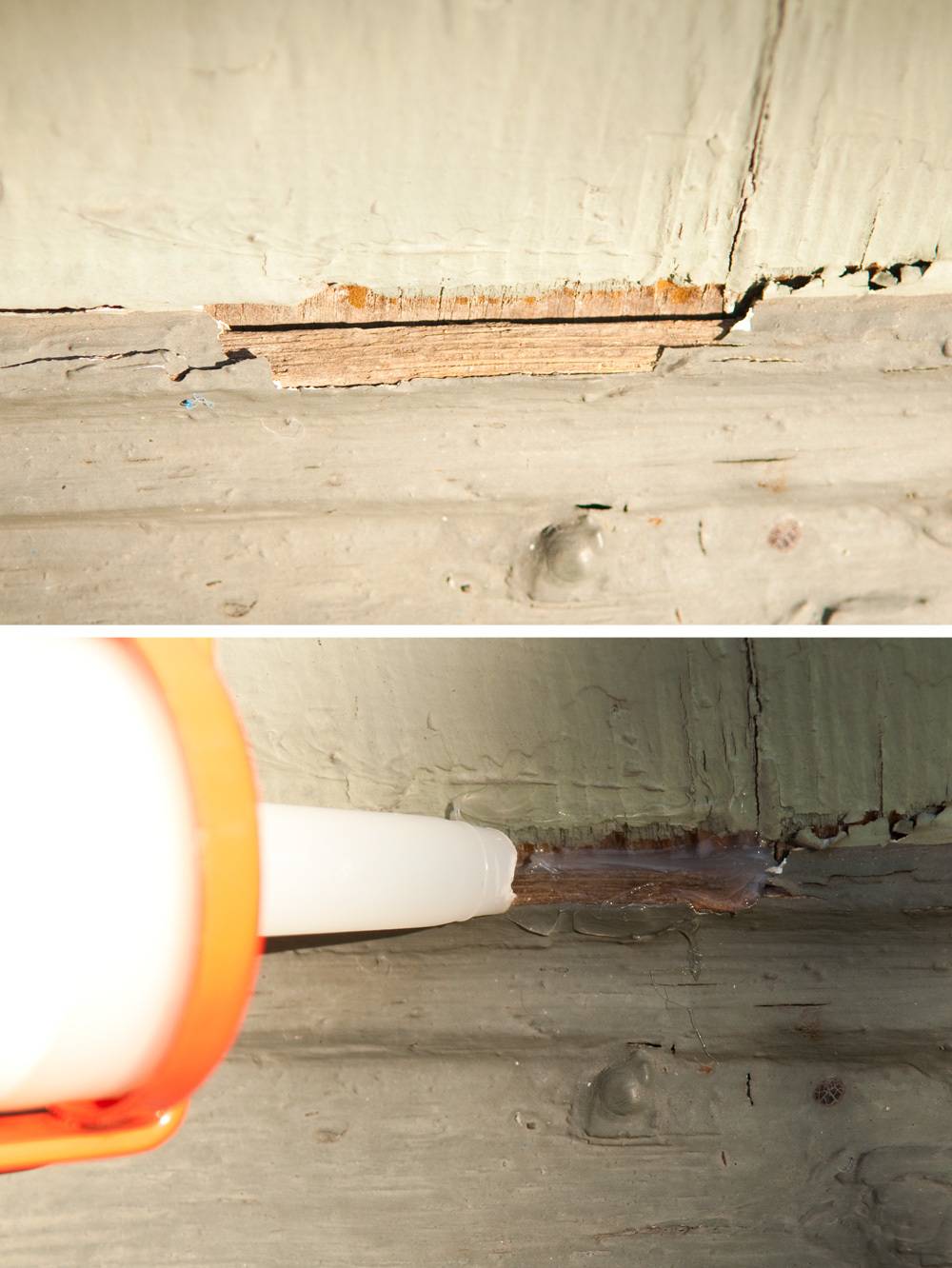
3. Repair the rest of the surfaces. Since you’re weatherproofing your house, you want to make sure the non-porch floor components are also sealed. Look around your railings, columns, stairs, molding, trim, etc, for any holes, cracks, or exposed wood. Seal them with silicon to prevent moisture from damaging the wood.
Yes – there is a reason to step up from the $2 caulking gun. My favorite is the classic orange one from Newborn Bros. It only costs a few bucks more, but the difference is amazing. So much more control, less waste, and easier clean-up. Trust me on this one. It’s worth the extra $5.
4. Okay, now it’s time to select your paint. When we went to our local True Value, we asked my new-best-friend Tim exactly what makes a paint best for porches. He said:
How to Select the Best Paint for Porches
- Use latex-based porch paint. It’s designed to be used outside in all climates. (That’s good!)
- Porch and floor paints have a high amount of binders that allow them to stand up to the heavy foot traffic and abuse. This also allows them to stick better, eliminating the need for an additional primer coat. Work and time saved! +10 points!
- Anti-skid latex paints have traction built into the formula, so they’re safer to walk on with wet, snow-covered shoes and bounding kids.
Tim also helped up color-match our old house paint from a sample, and tinted it a few shades darker so everything would blend nicely. Thanks, Tim!
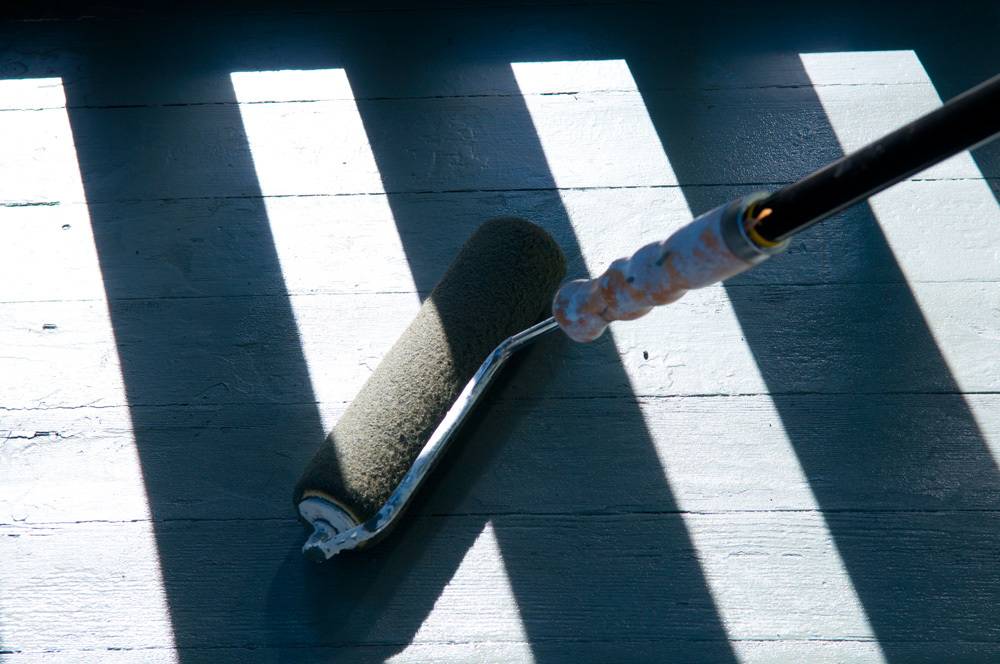
5. Let’s Paint!
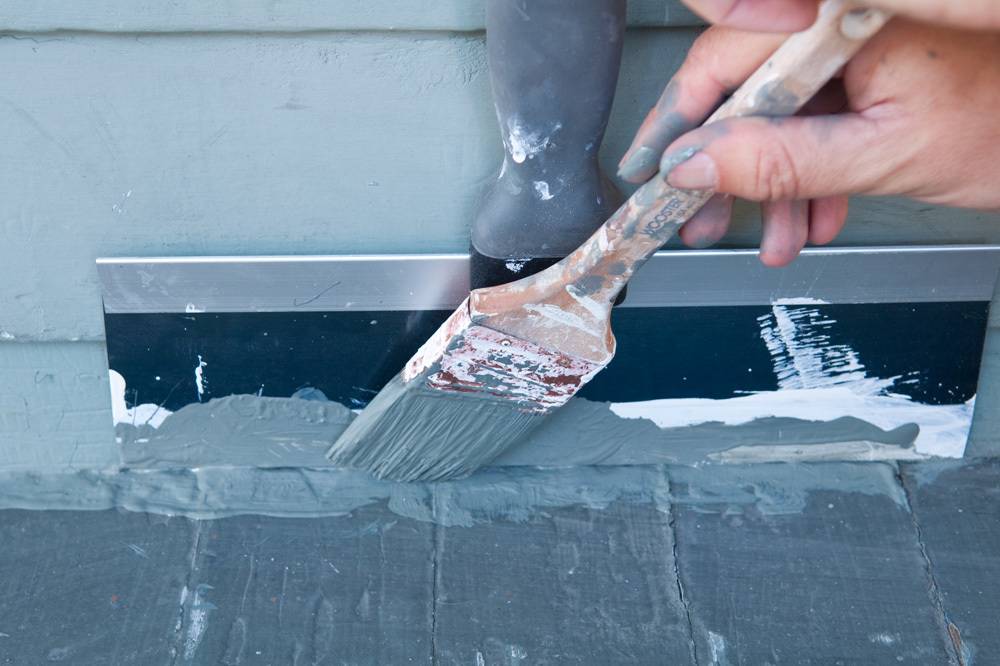 I always prefer to cut in first. With long, straight surfaces, you won’t always need to tape off your edges. A long, flexible drywall knife can protect adjacent surfaces just fine, preventing lots of hassle. Save the taping for tight corners, molding, and trim.
I always prefer to cut in first. With long, straight surfaces, you won’t always need to tape off your edges. A long, flexible drywall knife can protect adjacent surfaces just fine, preventing lots of hassle. Save the taping for tight corners, molding, and trim.
With the trim and corners covered, apply the paint with a roller attached to an extension pole. Plan your route carefully, so you don’t literally paint yourself into a corner.
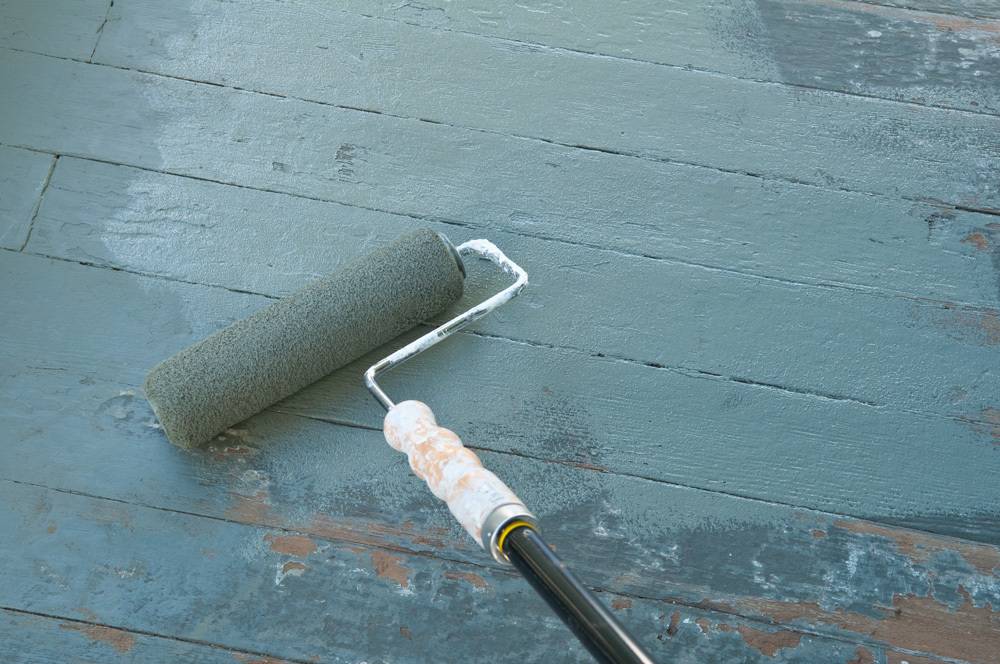
I went ahead and applied a second coat while I already had the rollers and tray covered in paint. I sealed them with plastic wrap and zip-top bag while the first coat dried, so I didn’t have to clean things twice. And yes, the plastic paint tray liner is always worth the extra $1. Those things are amazing.
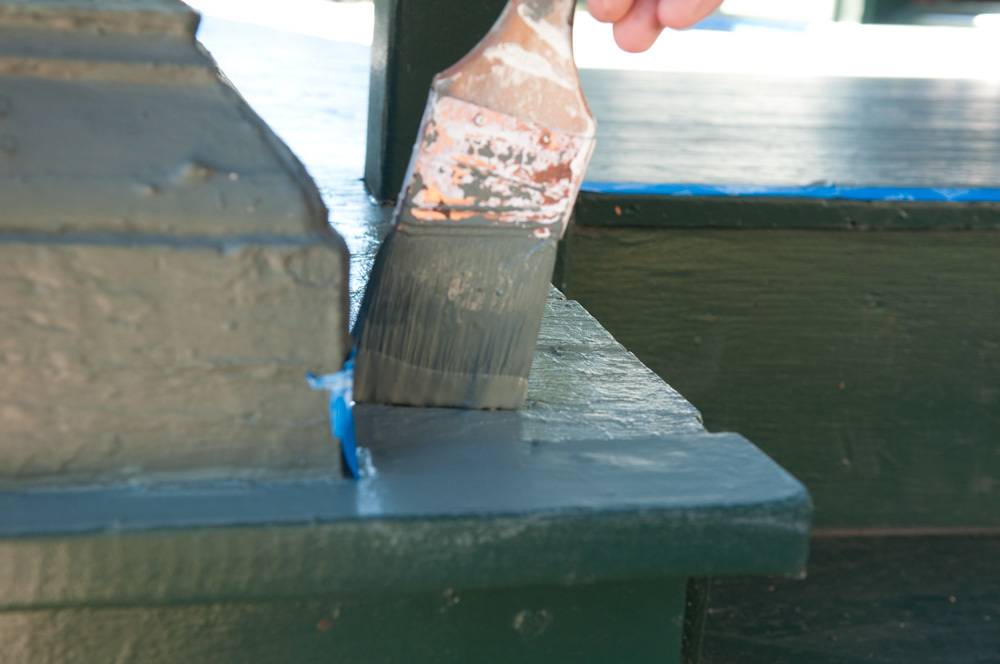
6. Let it be. With exterior surfaces, it’s imperative to make sure everyone knows that they should not walk on fresh paint for at least 72 hours. Make signs and use painter’s tape to block off entrances so the mail carrier, visitors, or potential solicitors don’t muck up your work.
Once it’s dry, you’re done. Sit down, hang out, and have a cup of tea.
A Mini-Porch and Front Yard Makeover
Eventually, we’ll need to paint the whole house and do some proper landscaping. But for this year, we decided to go ahead and complement the fresh coat of paint with a small facelift that makes the front of our home feel much more welcoming. We started by removing those things that drove us crazy.
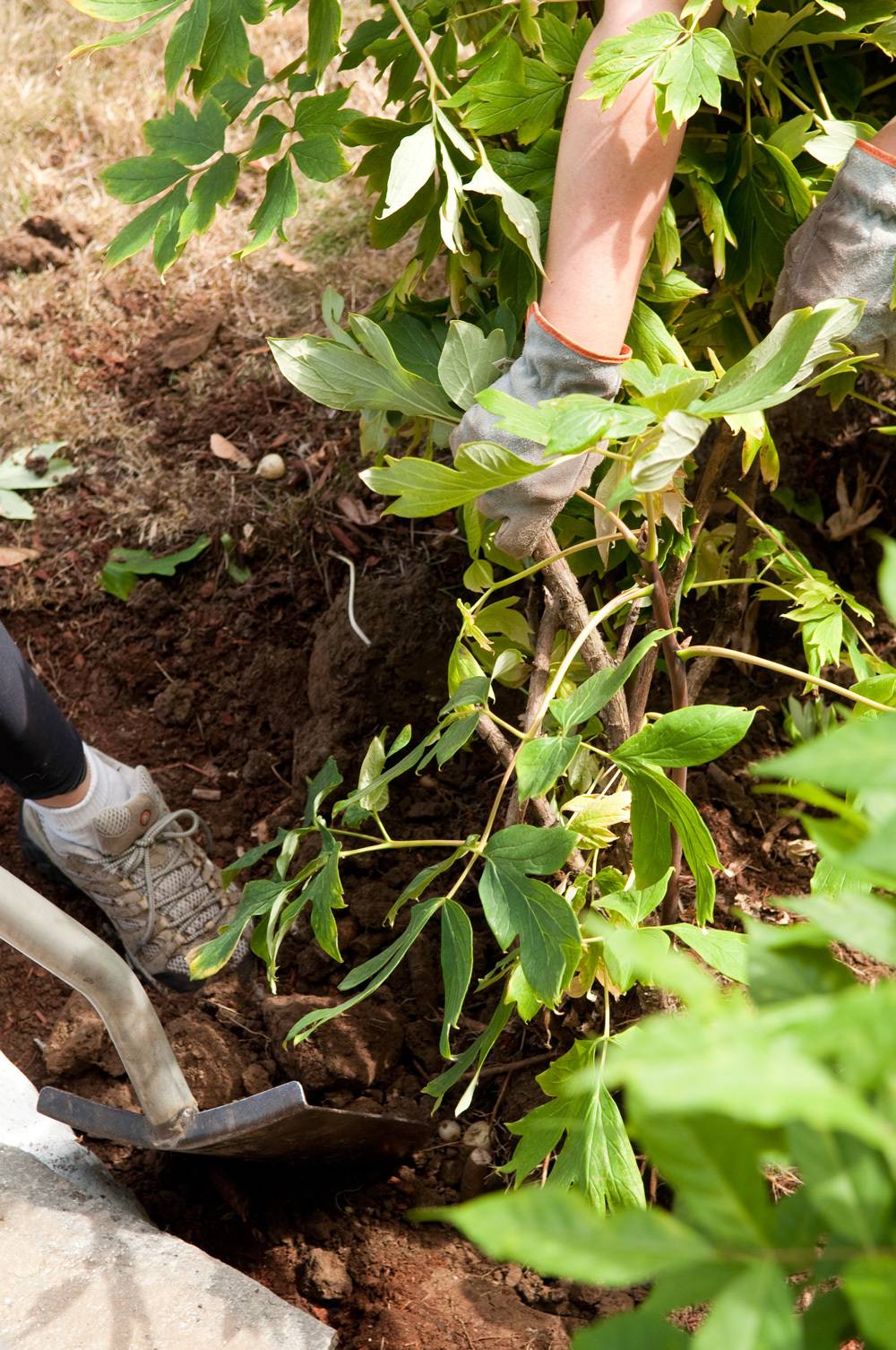
We dug up the overgrown plants, and that ugly blue tarp, and added mulch and some proper native shrubs and trees to the garden beds. While their foliage is smaller and less impressive for now, by next summer, they’ll be bold and green and awesome.
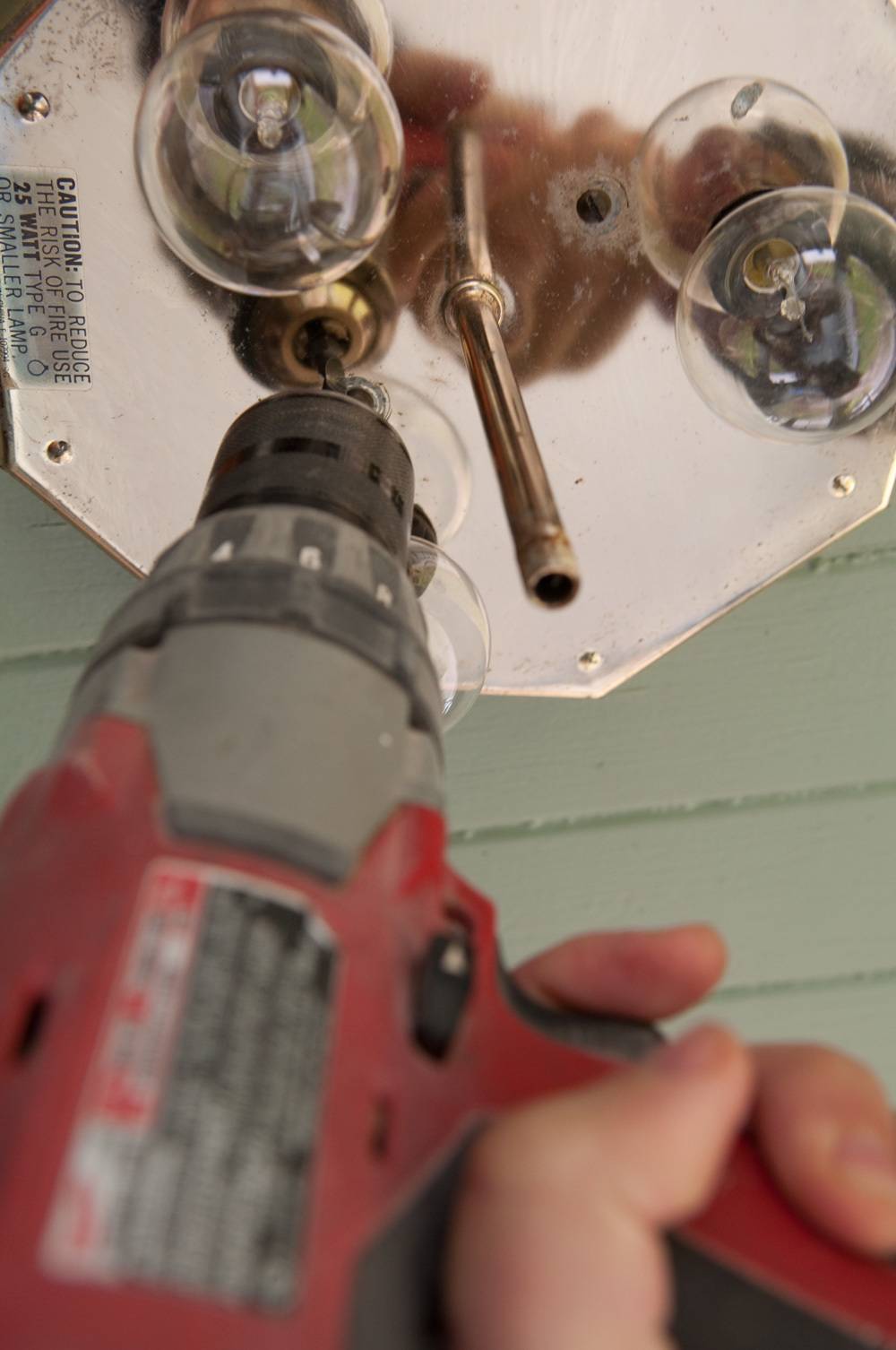
Then, I took down that busted brass light and replaced it with something a little more inline with the home’s classic Northwest bungalow style. Thankfully, the wiring was fine, it was just the lamp itself that was broken.
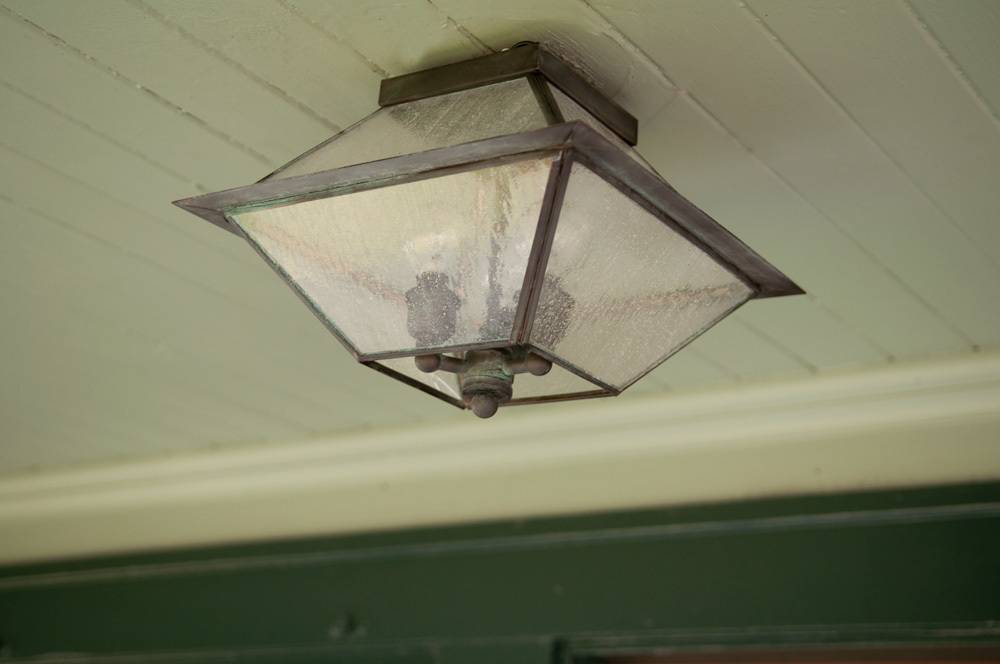
We now have a light to leave on for guests (and ourselves!) for the first time since we moved in. Hooray for hospitality!
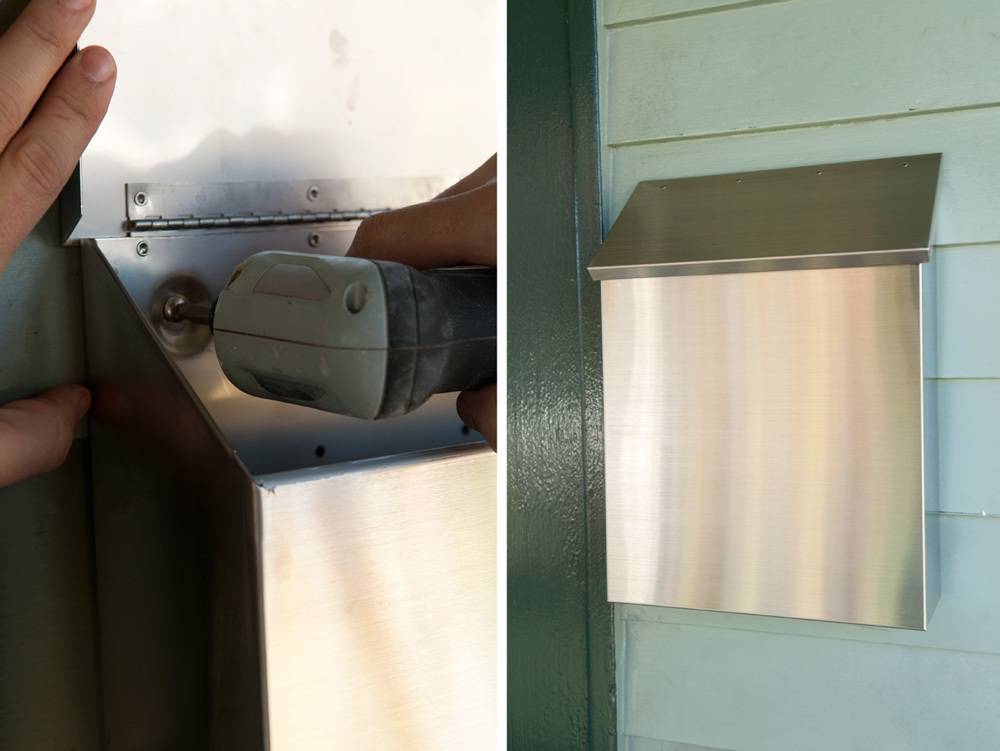
Next, I took down that broken tile mailbox and replaced it with something fresh and clean. I affixed it to the house with stainless steel panhead sheet metal screws, which won’t rust and hold onto the surface nicely. This is one of my favorite things about the neighborhood hardware store over the big box store. The variety of hardware is huuuuuuuuuge, and you can buy each piece individually, instead of a box of 100 when you only need four. Love it.
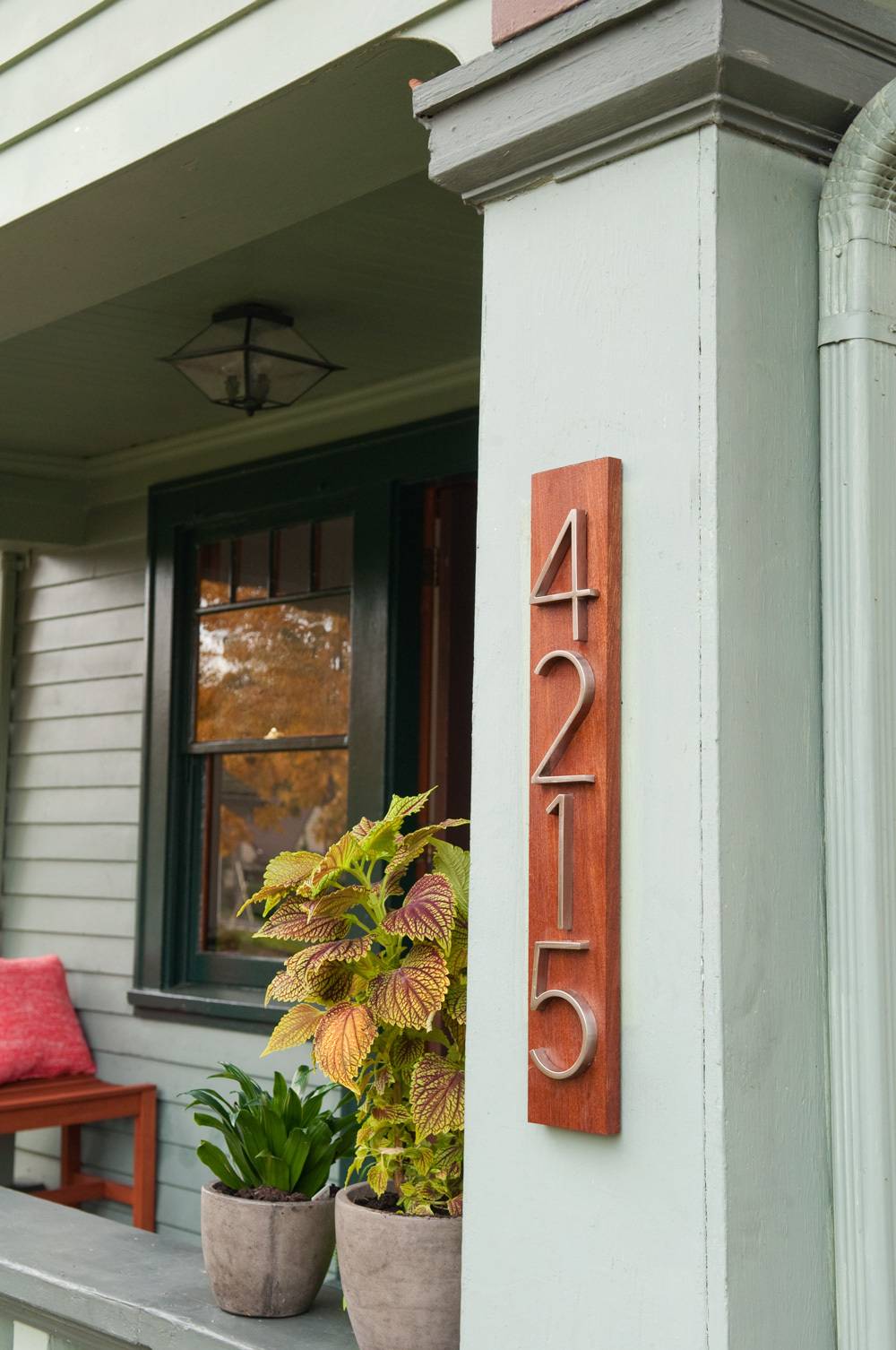
I gladly removed the floral tile house numbers (and threw them in the garbage with gusto). I replaced them with these sleek typeface numbers attached to a piece of decking, which matches the Arts and Crafts-era of the home better. I’ll share the full how-to in a future post.
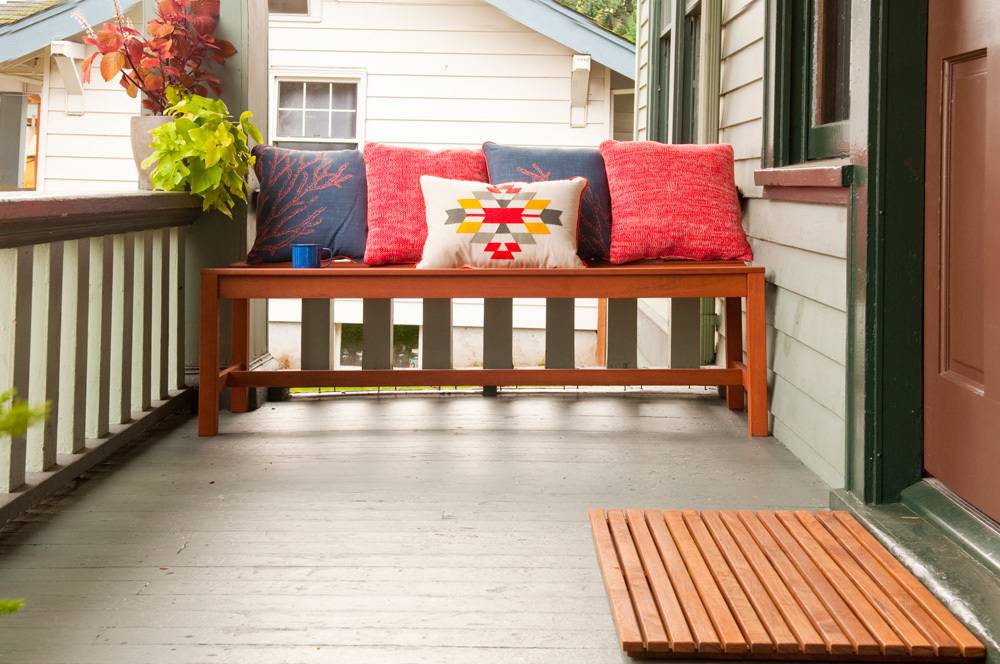
Then, we added an elegant wooden slat welcome mat, a new bench and outdoor pillows, and some additional plants. I replaced our door knobs and locks with new hardware, which looks waaaaay better, and makes us feel a little safer. It’s nice knowing exactly how many keys to our house are out there, and who has them. (Three, and us.)
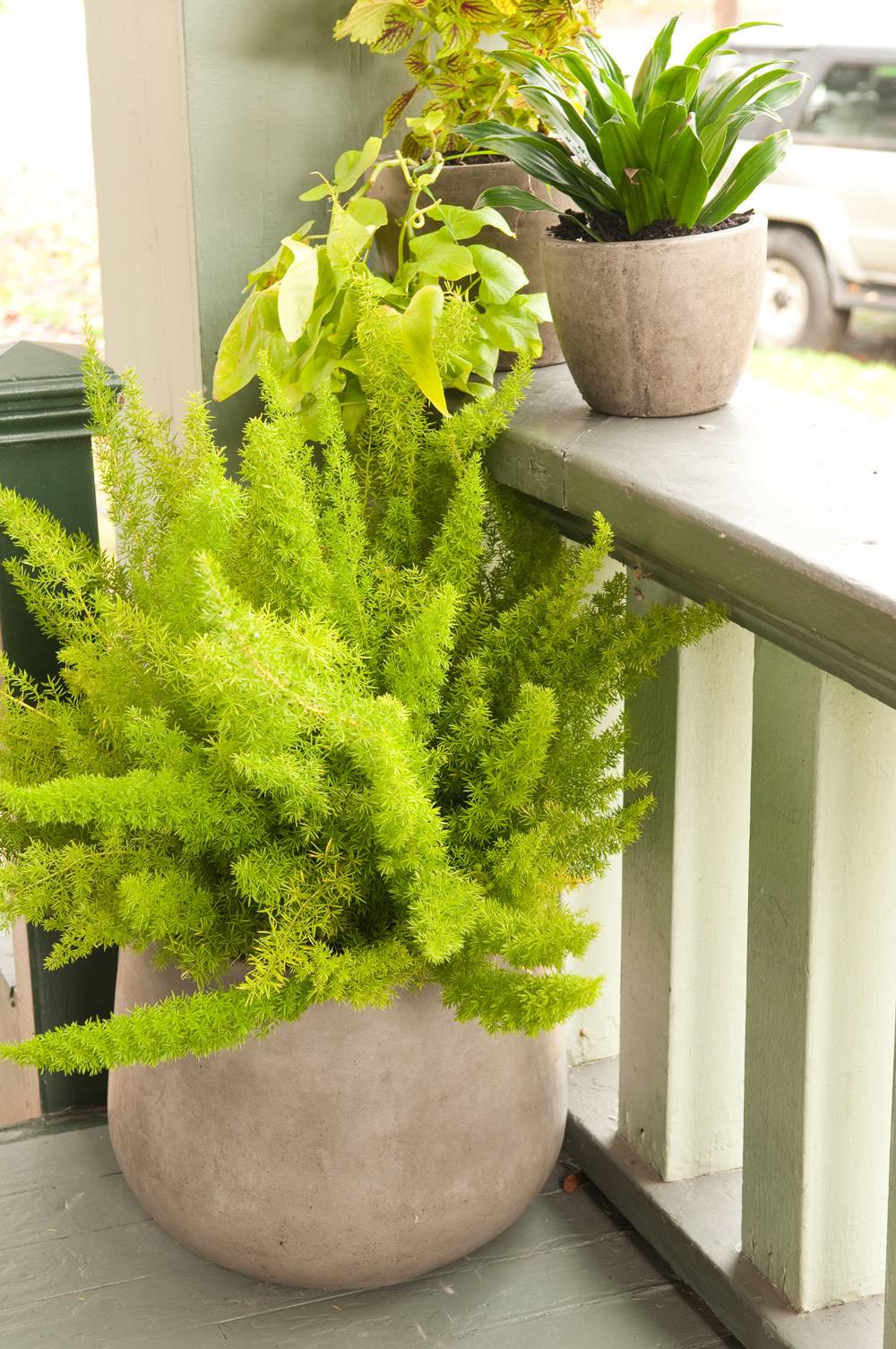
It’s amazing how much more cohesive a new coat of paint and a few accessories can make a space feel. We’ve been sitting out here, soaking up the last few weeks of fall, and feeling great knowing that when that winter weather hits, our porch will be protected.
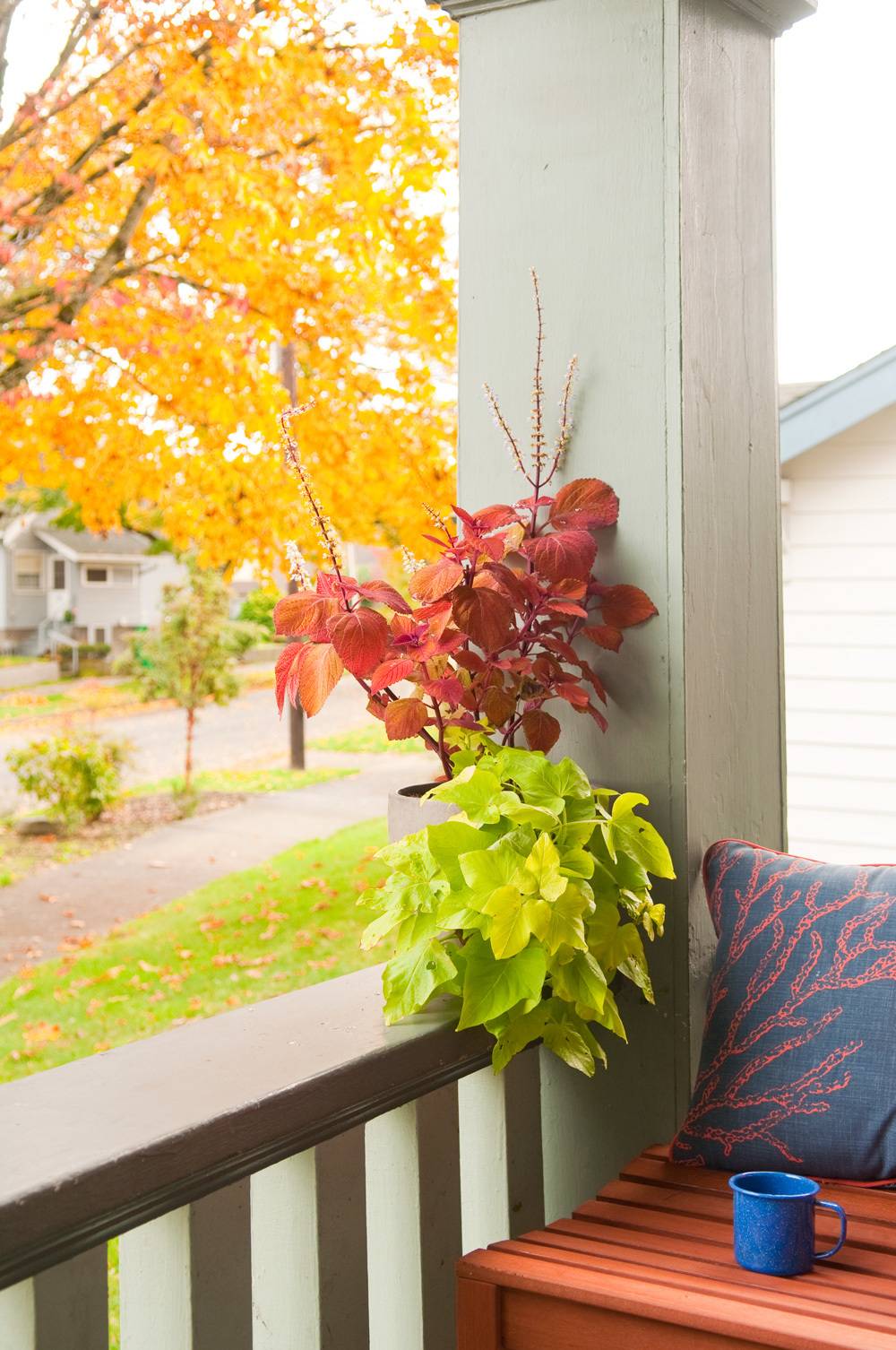
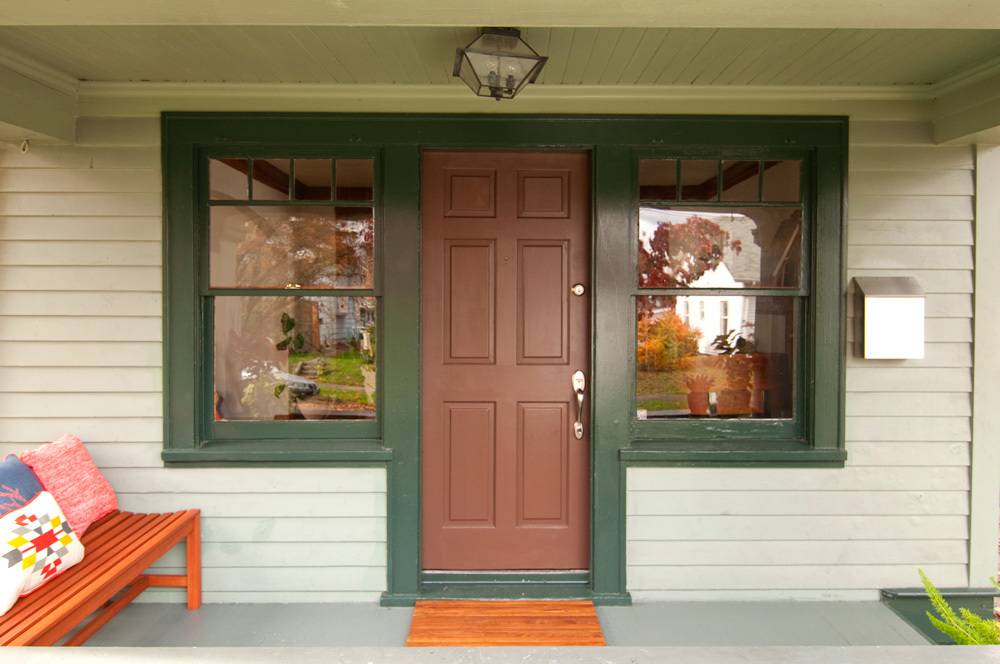
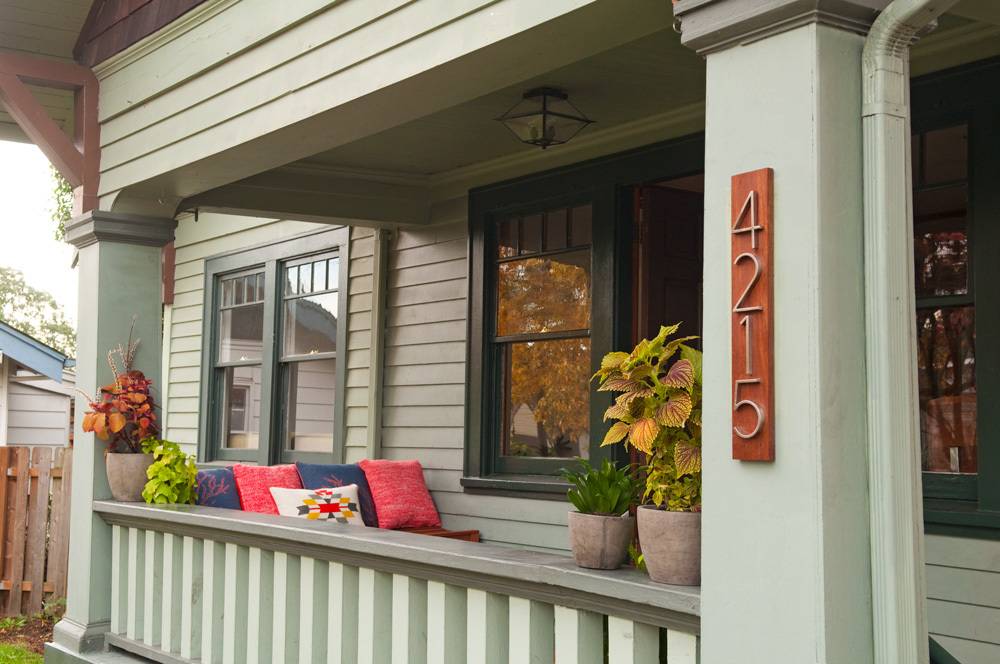
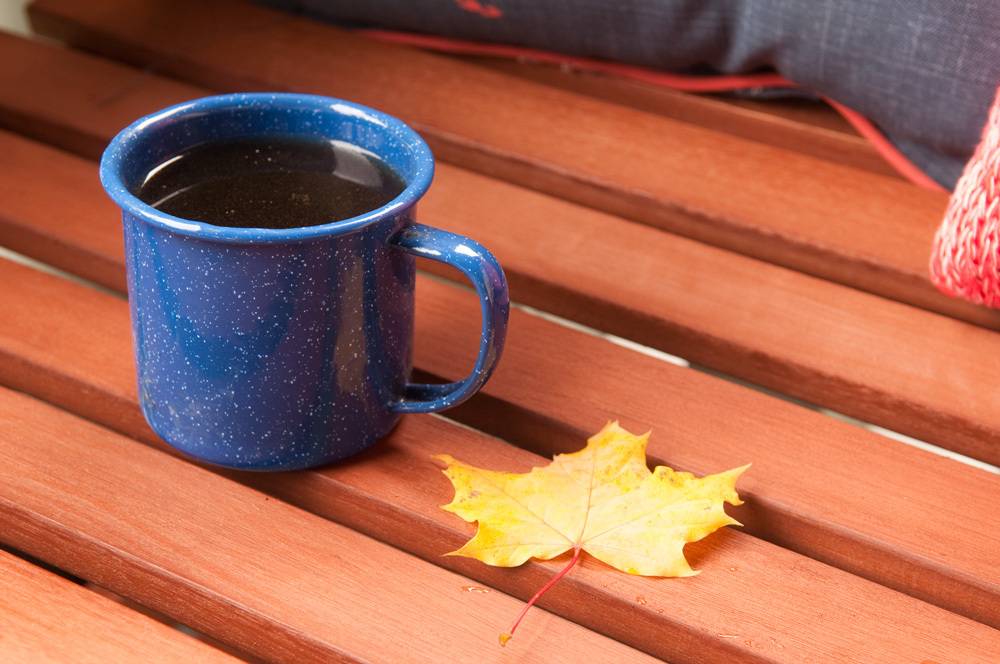
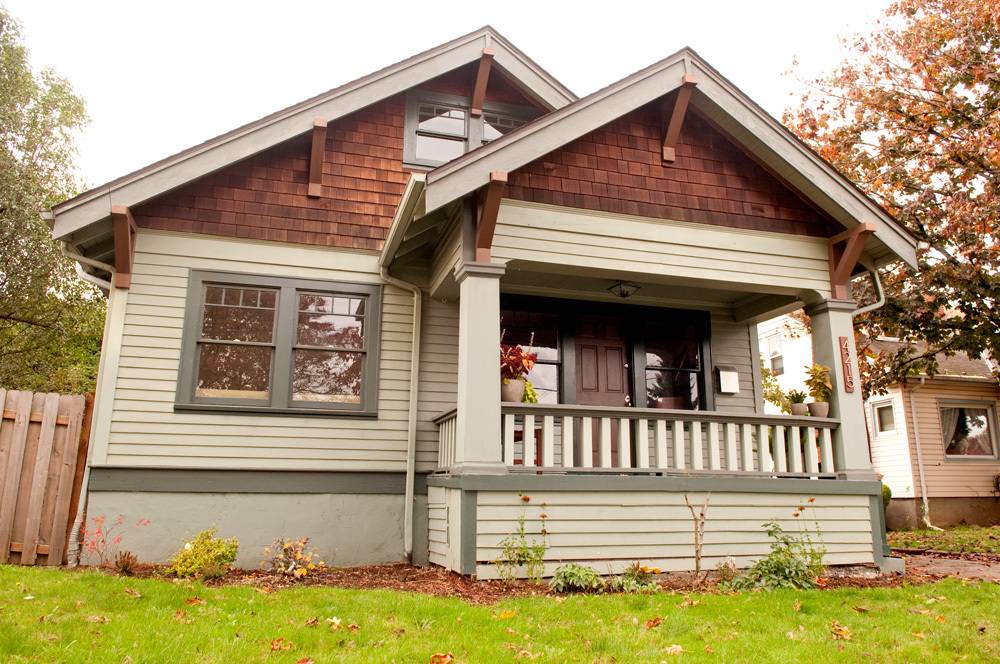
This post is part of a series, sponsored by our friends at True Value (we’re part of their DIY Squad this year). All opinions are mine alone. Thanks for supporting the brands that help us keep the lights on here at Curbly.
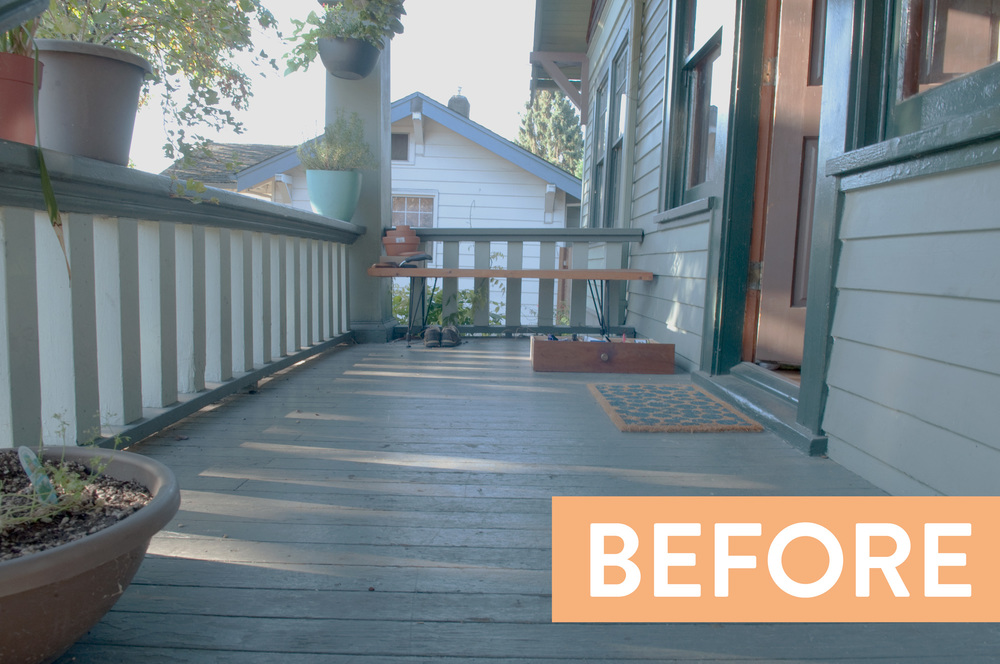
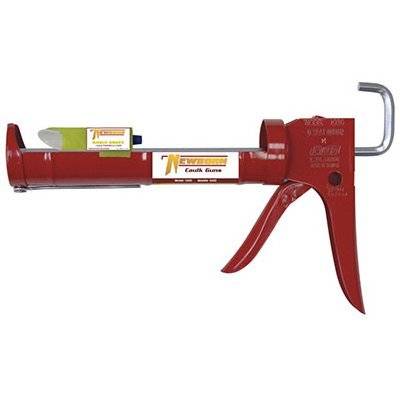
That’s a nice makeover! Looks cozy
Beautiful! Congratulations!
Beautiful arts and crafts home!
New target ad plays on replay and blocks content. Disappointed.
Hey @no good – would you mind e-mailing me ([email protected]) with some details (like, where you saw the ad, what device you were on)? This really shouldn’t be happening, and I’d like to track it down and fix it.
Thanks
Bruno
Love this. How much did it physically cost in products. I understand the time you needed to put in is different